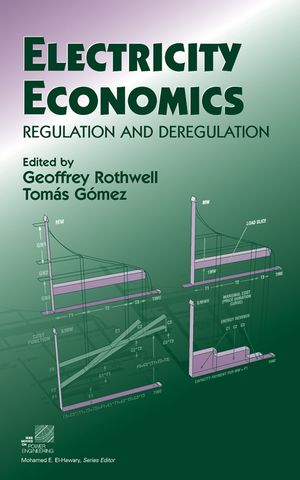Electricity Economics: Regulation and DeregulationISBN: 978-0-471-23437-1
Hardcover
304 pages
February 2003, Wiley-IEEE Press
 This is a Print-on-Demand title. It will be printed specifically to fill your order. Please allow an additional 10-15 days delivery time. The book is not returnable.
|
||||||
Electric utilities worldwide are undergoing profound transformations: nationally owned systems are becoming privatized, privately owned systems that were previously regulated are becoming deregulated, and national systems are becoming international.
Professionals in the power sector must now work in a new world in which an understanding of the principles of markets and how to evaluate investment projects under competition are essential.
This text was written as a manual for the Russian Federal Energy Commission to train regional electricity rate regulators in the principles of economics and finance involved in regulating electricity markets and deregulating electricity generation. Requiring no familiarity with economics and using a minimum of mathematics, this book provides professionals in the power sector with the tools to face the new realities of electric utility operation.
Designed both as a reference for practicing professionals and as a textbook for university and continuing education programs, Electricity Economics: Regulation and Deregulation discusses:
- The lessons learned from international experiences
- Competitive versus noncompetitive markets
- Cost and supply, profit, and economic efficiency
- The cost of capital, including net present value, discounting, and risk and return
- Wholesale power markets, generation expansion, and customer choice
- Specific international examples including the Californian, Norwegian, Spanish, and Argentine power sectors
- Plus numerous exercises to help clarify and support absorption of the concepts



